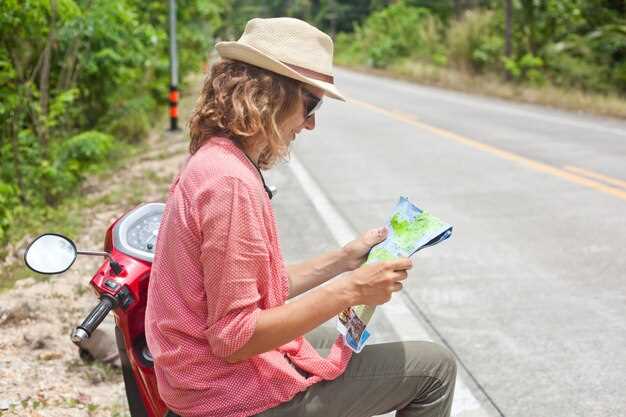

The open road awaits, filled with promises of adventure and unforgettable experiences. A cross-country motorcycle trip is not just a journey; it’s an exploration of diverse landscapes, cultures, and connections that can only be found at every turn of the throttle. Whether you dream of riding along coastal highways, through winding mountain passes, or across vast plains, careful planning is essential to ensure a smooth and enjoyable ride.
Before you embark on this epic adventure, consider the various elements that will shape your trip. From selecting the ideal route to mapping out your accommodations, preparation is key to turning your vision into reality. Understanding your motorcycle’s capabilities, planning for rest stops, and keeping an eye on weather conditions will enhance your experience and allow you to focus on the thrill of the ride.
In this guide, we’ll provide you with the essential tips and insights necessary for successfully planning your cross-country motorcycle trip. We will discuss route selection, packing essentials, safety precautions, and how to make the most of every moment along the way. Get ready to unleash your inner wanderer and embrace the spirit of adventure as you traverse the open highways and scenic byways that await you.
Choosing the Right Route for Your Motorcycle Adventure

Selecting the ideal route for your cross-country motorcycle trip is crucial for an unforgettable experience. Begin by considering what you desire from your journey. Are you seeking scenic landscapes, thrilling highways, or a combination of both? Mapping out your preferences will help you tailor a route that aligns with your expectations.
Utilize motorcycle-specific mapping tools and apps that offer insights into road conditions, elevation changes, and popular biker-friendly stops. Look for routes that feature winding roads, picturesque views, and minimal traffic, which can enhance your ride. Scenic byways often provide breathtaking vistas and unique attractions, making them a worthwhile choice.
Factor in your riding skills and motorcycle capabilities. Some routes may present challenges such as steep hills or gravel roads that could be unsuitable for certain bikes or riders. Research the type of terrain you’ll encounter to ensure safety and comfort throughout your adventure.
Diversify your route by incorporating some detours that allow you to explore hidden gems along the way. National parks, historical sites, and local eateries can provide enriching experiences, making your trip memorable. Additionally, prioritize rest stops to recharge both yourself and your motorcycle, ensuring a pleasant ride.
Lastly, remain flexible. Weather conditions and unforeseen circumstances may require route adjustments. Stay informed and be ready to adapt your plans as you navigate the diverse landscapes of your cross-country motorcycle journey. Your route should not only serve as a path from point A to B but also as a canvas for adventure and exploration.
Essential Gear and Maintenance for Long-Distance Riding

Embarking on a cross-country motorcycle adventure requires careful planning and the right gear to ensure safety and comfort throughout the journey. Below are key elements to consider for your motorcycle trip.
Key Gear for Long-Distance Riding
- Protective Gear: Always wear a quality helmet, jacket, gloves, and boots. Look for gear that offers abrasion resistance and impact protection.
- Comfortable Riding Apparel: Invest in moisture-wicking layers, padded shorts, and thermal gear if riding in varied climates.
- Panniers and Luggage: Choose durable and waterproof saddlebags to securely carry your essentials while maintaining balance on the bike.
- Navigation Tools: Bring a reliable GPS device or a smartphone with offline maps to navigate unfamiliar roads without hassle.
- First-Aid Kit: A compact first-aid kit is crucial for handling minor injuries. Include items like band-aids, antiseptic wipes, and pain relievers.
Maintenance Essentials
- Regular Inspections: Before setting off, ensure a thorough check of your motorcycle’s brakes, tires, lights, and fluids. This helps prevent breakdowns during your adventure.
- Emergency Repair Kit: Carry tools for basic repairs, including tire patch kits, wrenches, and screwdrivers. Familiarize yourself with common motorcycle repairs.
- Fluid Checks: Keep an eye on oil, brake fluid, and coolant levels. Change the oil and filter before embarking on a long trip, and carry extra oil for top-offs.
- Tire Care: Check tire pressure and tread depth regularly. Having a portable air pump can save you in remote areas.
- Battery Maintenance: Inspect the battery condition and connections, especially if you plan on riding in extreme temperatures that could affect performance.
Equipped with these essential items and maintenance practices, you’ll be better prepared to tackle the challenges of long-distance riding and enjoy the thrill of your cross-country motorcycle adventure. Safe travels!
Budgeting Tips for a Cross-Country Journey on Two Wheels
Planning a cross-country motorcycle adventure requires careful budgeting to ensure you have a memorable experience without breaking the bank. Start by outlining your overall trip duration and estimated mileage, as this will help you determine fuel costs. Research average gas prices in the regions you plan to travel through, and calculate your fuel expenses using your motorcycle’s fuel efficiency.
Next, consider accommodations. While hotels and motels can be costly, explore alternatives such as camping or staying with friends and family along the route. Websites and apps dedicated to finding affordable lodging or camping spots can assist in keeping your expenses down. Budget for unexpected expenses like booking fees or last-minute cancellations.
Food is another significant expense on any journey. To save money, plan to prepare some meals on your own if possible. Carry a small camping stove or invest in a quality cooler to keep food fresh. Alternatively, research local diners or eateries that offer hearty meals at reasonable prices, and make use of meal deals or special discounts.
Don’t forget about maintenance and gear costs. Before embarking on your adventure, conduct a thorough inspection of your motorcycle. Set aside funds for potential repairs or necessary replacements, especially if you’re hitting remote areas. Safety gear is essential; ensure you have budgeted for helmets, jackets, and gloves if you need them.
Finally, allocate a portion of your budget for entertainment and sightseeing. While you may want to stick to free or low-cost attractions, certain national parks or regions might have entrance fees. Research the places you’d like to visit and factor these costs into your overall budget. This will allow you to enjoy the adventure fully without constantly worrying about finances.
